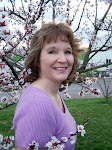The great Agatha Christie favored poison as her preferred means of dispatching unfortunate
characters in many of her murder mysteries. One of the deadliest herbs, Monkshood, also called Aconite and Wolfsbane, certainly played a part.
Torre Abbey in Torquay has a garden devoted to the plants that rear their heads in her work. Torre Abbey, built in 1196, is the largest surviving medieval monastery in Devon and Cornwall.
“Agatha Christie’s Potent Plants is the creation
of Torre Abbey Head Gardener Ali Marshall, who in true crime writing
style researched around 80 of Agatha Christie’s novels and short stories
in just six months to come up with the Abbey’s own unique
commemoration. The new feature links the author’s interest in poisonous
plants, her wartime work as a pharmacy dispenser and the medicinal
plants that Torre Abbey’s medieval canons might have used.
With Poirot-esque determination
and attention to detail Ali Marshall, with the help of experts at
Torquay’s Agatha Christie Shop, has designed a garden with a central
display of potent plants surrounded by plants that serve as Agatha
Christie clues, solved only with a knowledge of the plots of some of the
author’s short stories. What better way could there be for Agatha
Christie fans to exercise their ‘little grey cells’?”
Ali Marshall
explains: “While this might sound extremely dangerous for staff and
public alike we have been very careful in our choice of plants,
substituting less potent garden cultivars where possible.
This is a garden designed to entertain – not provide murderous opportunities!
The fruit stones of the Prunus family, for example, once processed, produce cyanide, used to lethal effect in “The Mirror Crack’d from Side to Side” and “A Pocketful of Rye” amongst others. Monkshood and Foxglovesalso
play a big part, as do Poppies and Yellow Jasmine. Other plants however
have a more positive purpose. A Kilmarnock Willow (aspirin) takes
centre stage while Valerian and Fennel owe their inclusion to their
reputed therapeutic benefits.”
For more on Torre Abbey~









I love to read your posts about herbs and plants. I always know if I'm going to use any of them/their properties in a book, I can count on your knowledge.
Thanks Linda, and yes you certainly can!
Beth, I love the picture of the castle. I would love to visit the garden, but knowing me I'd wind up getting poisoned! Would have to be very careful. Question for you, are you aware of the wild herb the Creek use for teething beads? Have you heard about them? My grandmother made them for my babies and they worked.
Beth, I'm a big fan of Agatha Christie and am always glad to read about her. When my husband was stationed in Germany, we visited castles all over Europe. A few had elaborate gardens, but none had such interesting or deadly plants. Thanks for sharing.
Wow, Beth. Your lessons teach and entertain! Considering grabbing some dandelion greens.
Wow, Beth. Your lessons teach and entertain! Considering grabbing some dandelion greens.
Beth,
So interesting. Your knowledge amazes me.